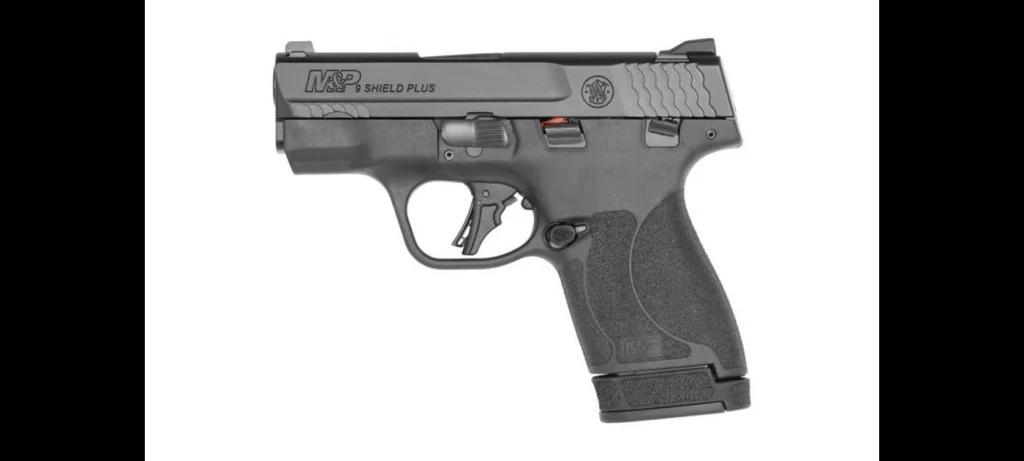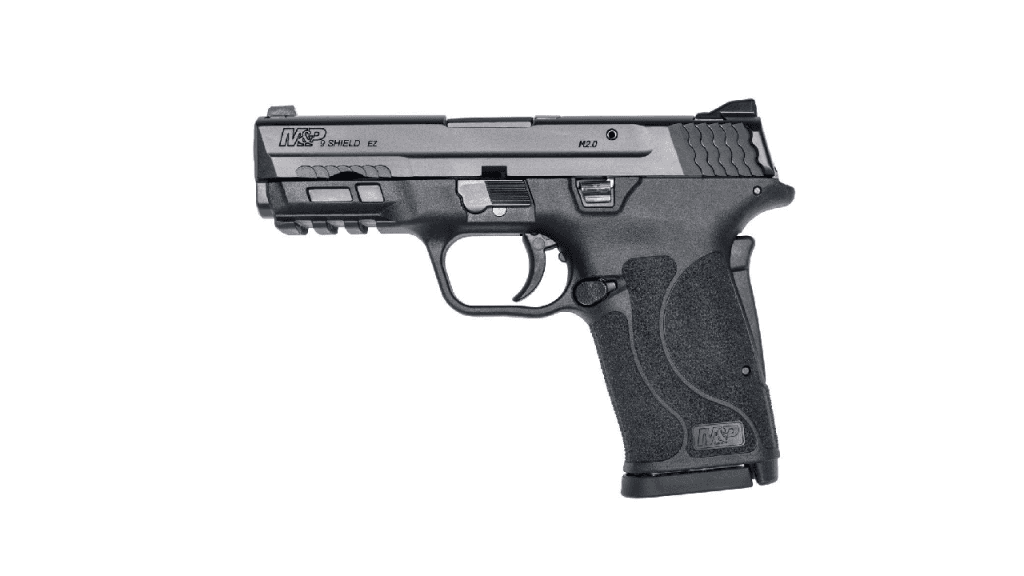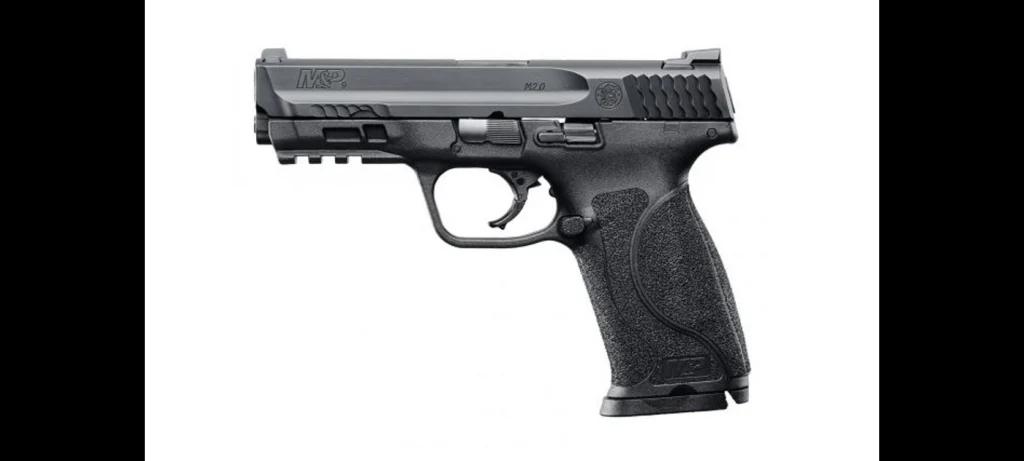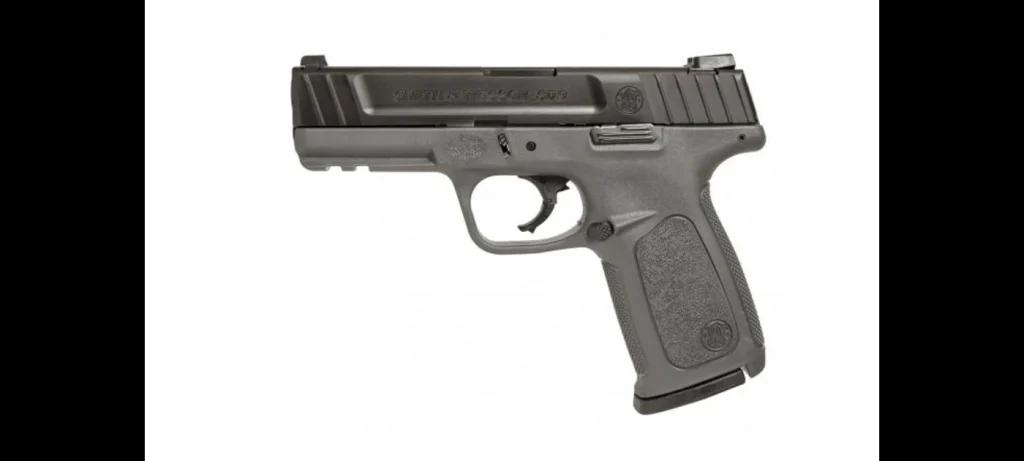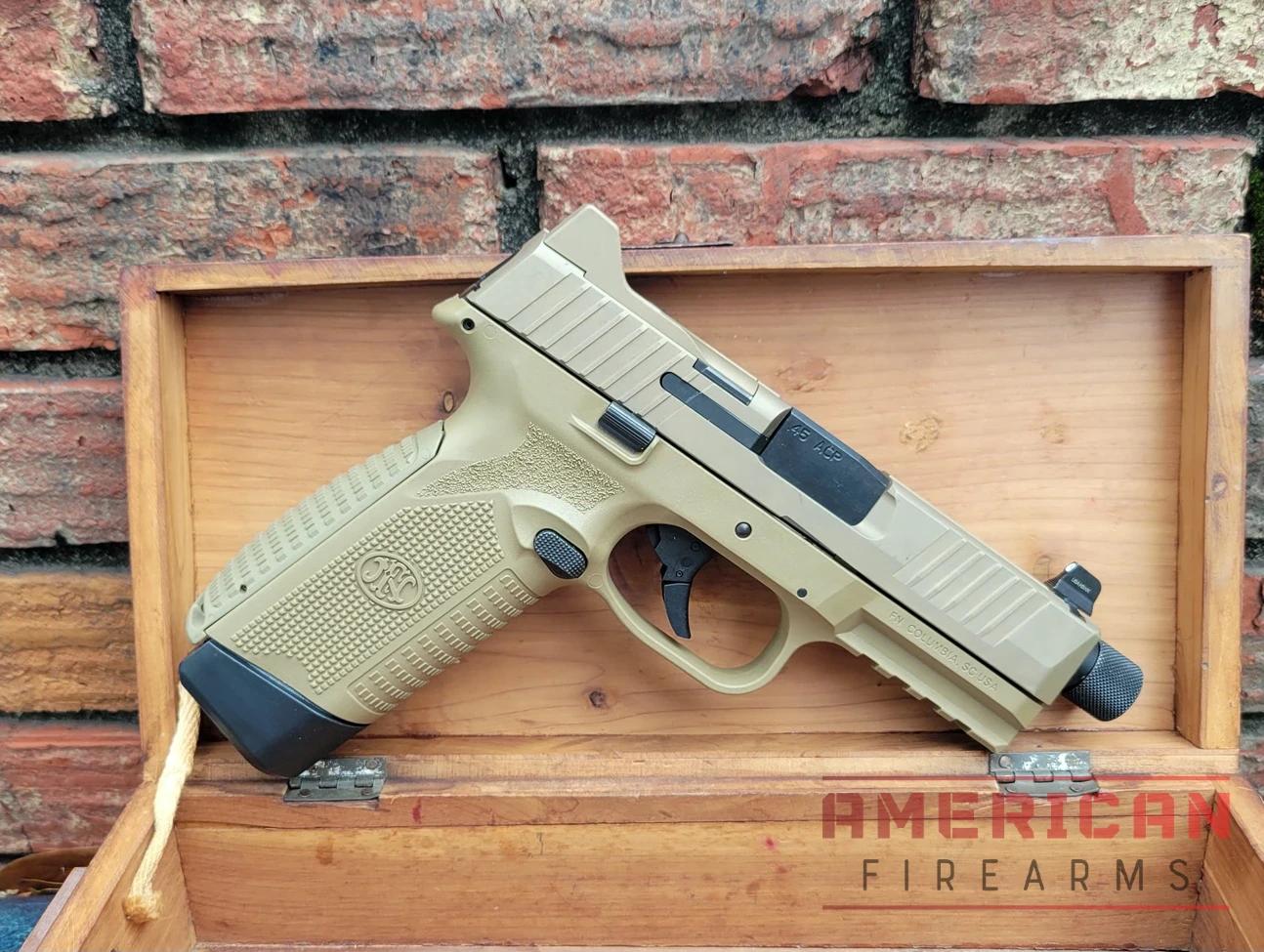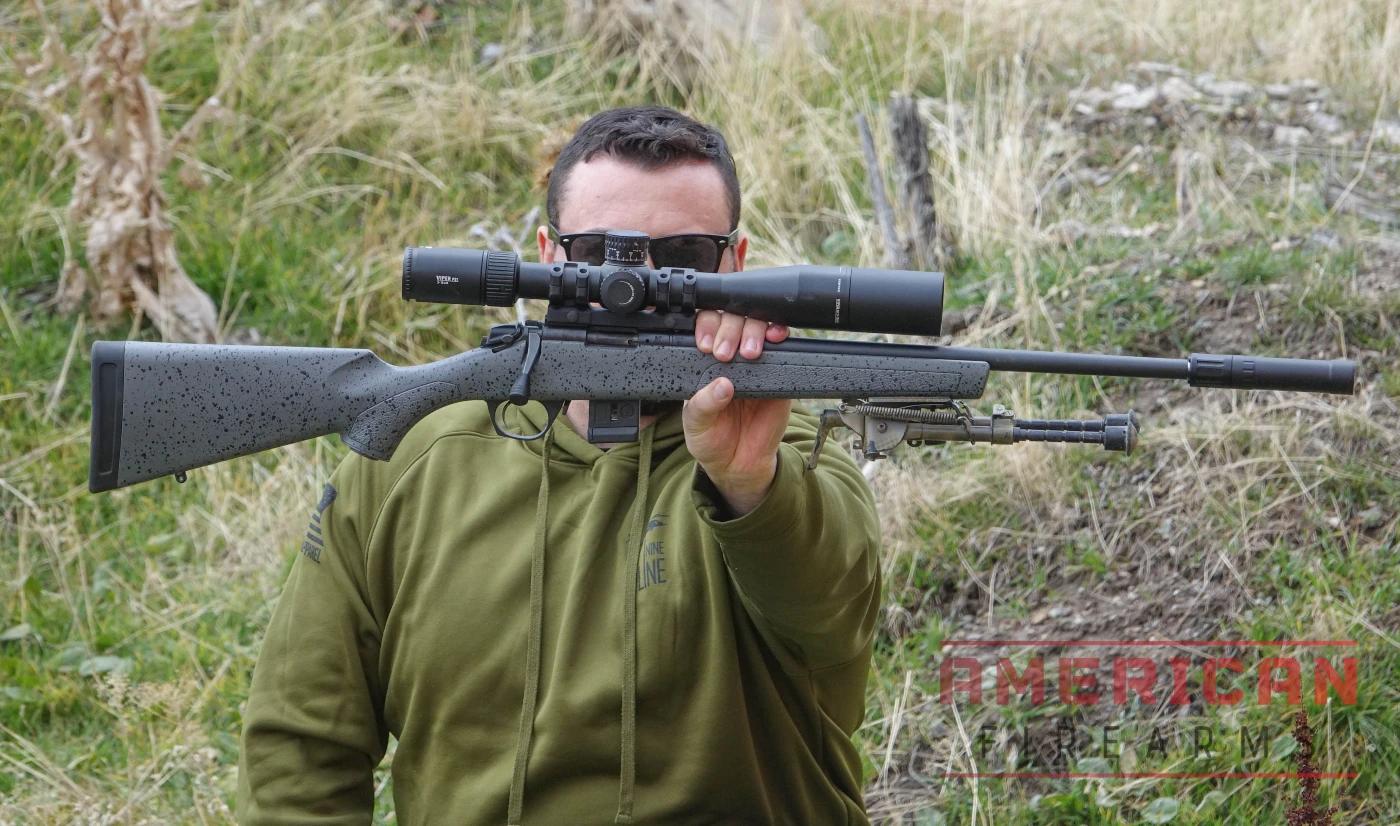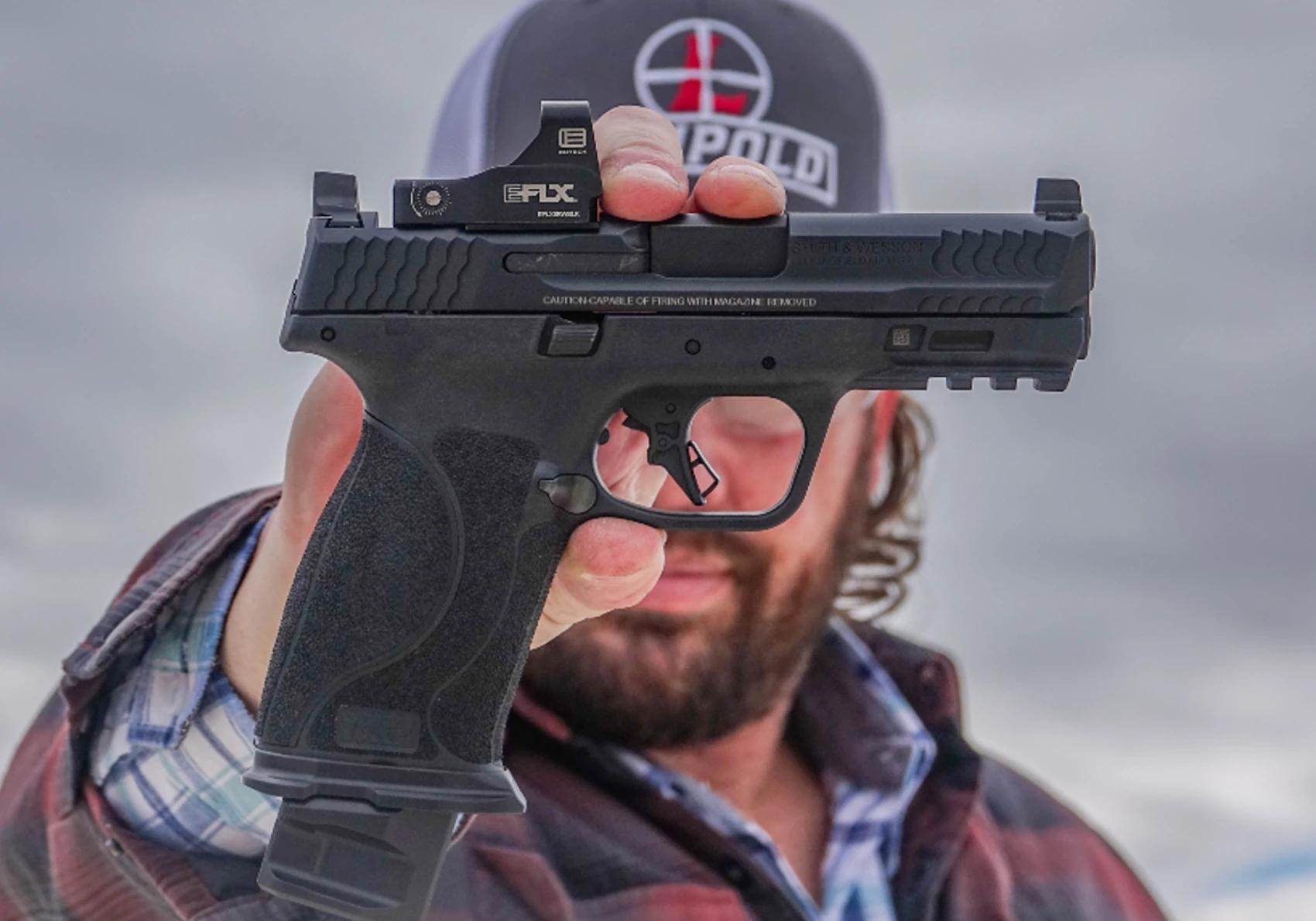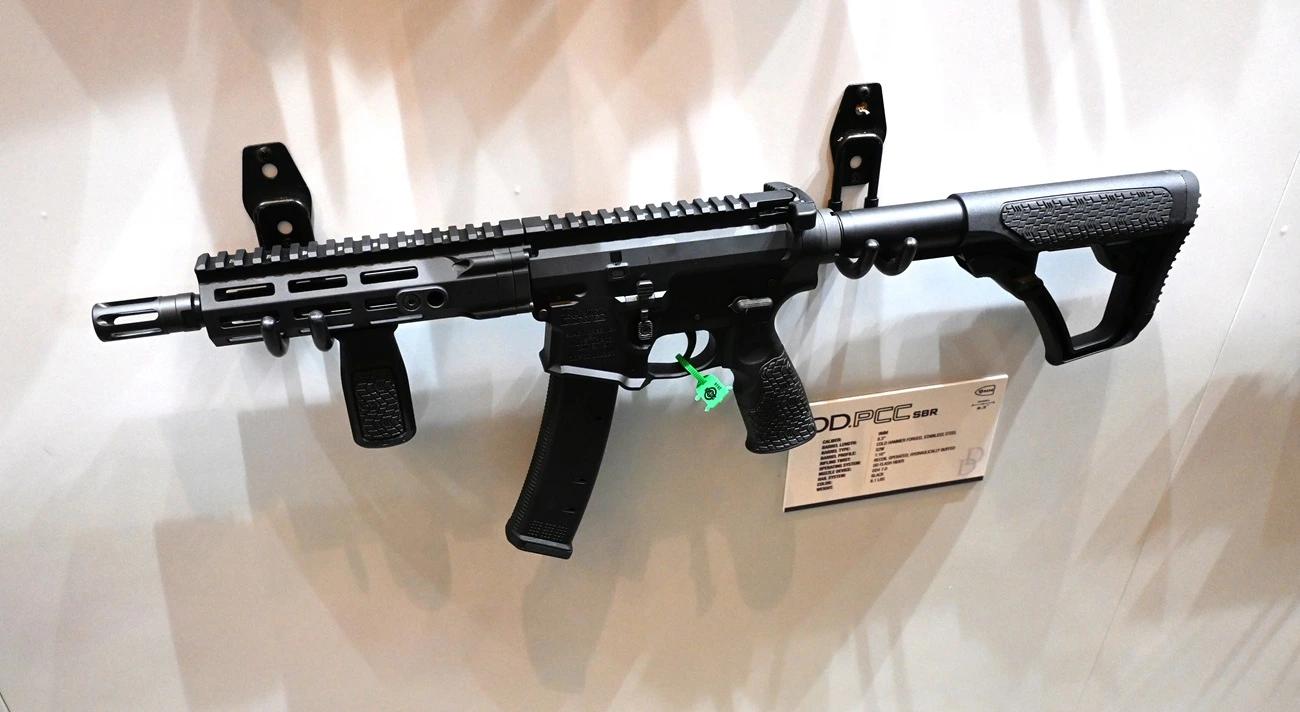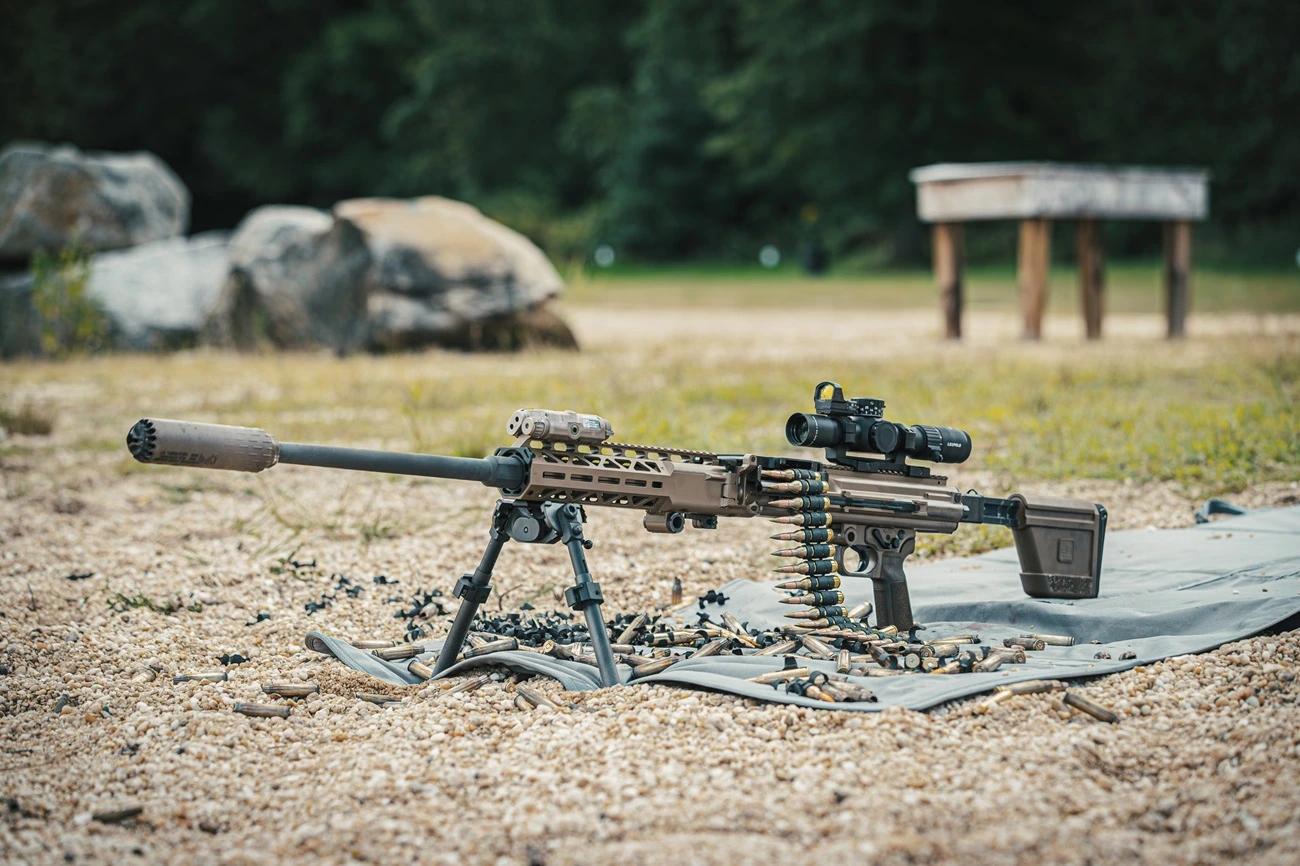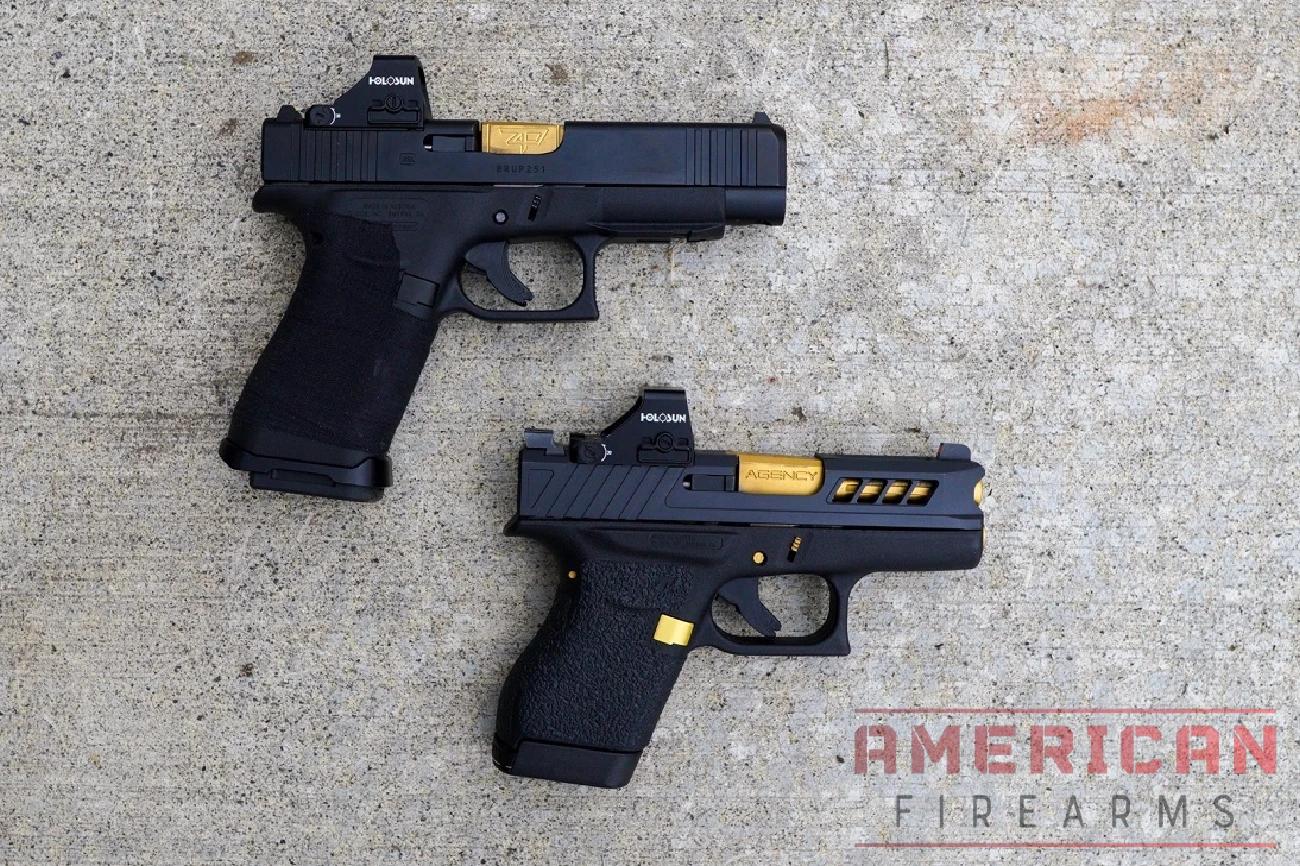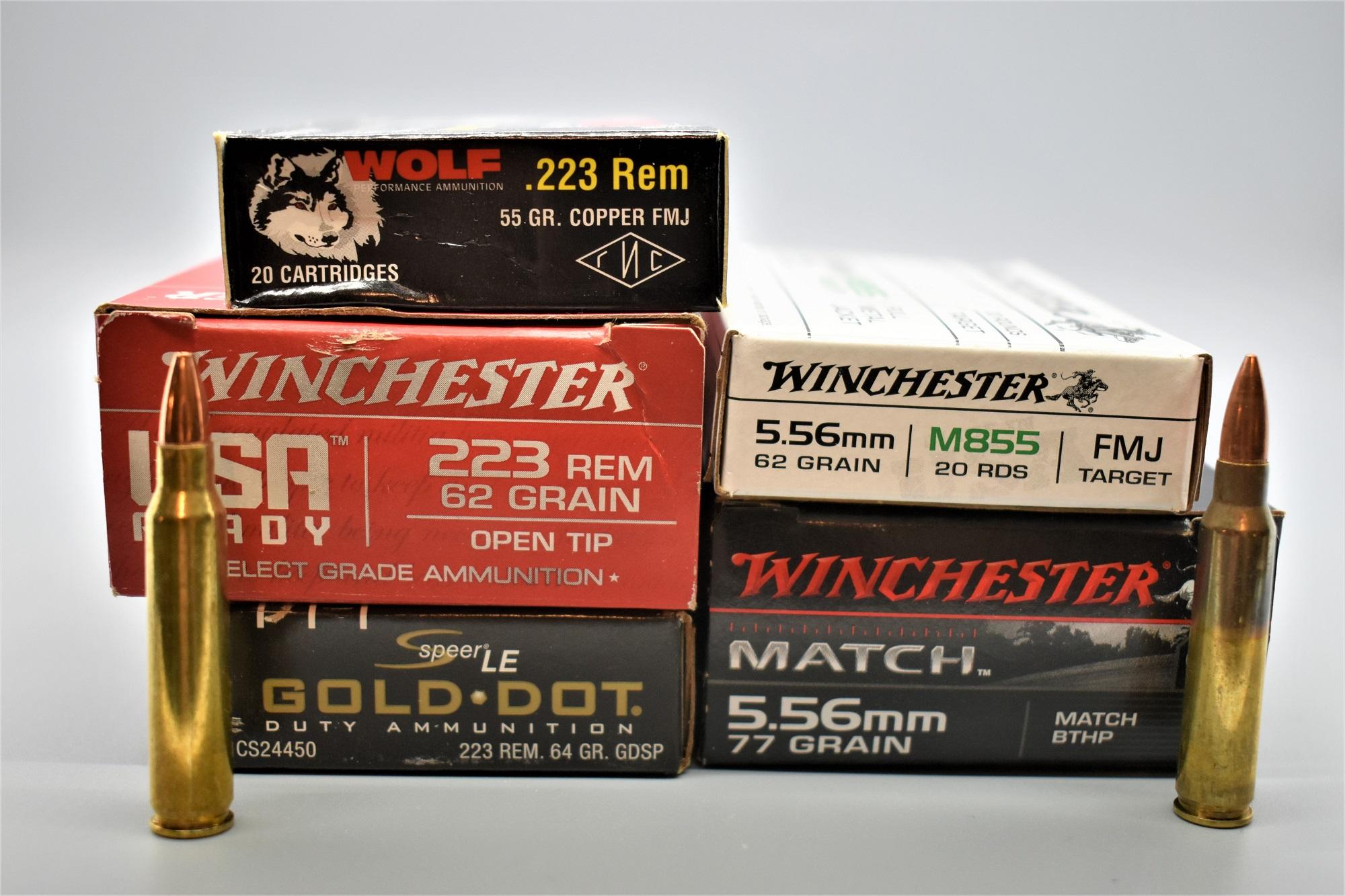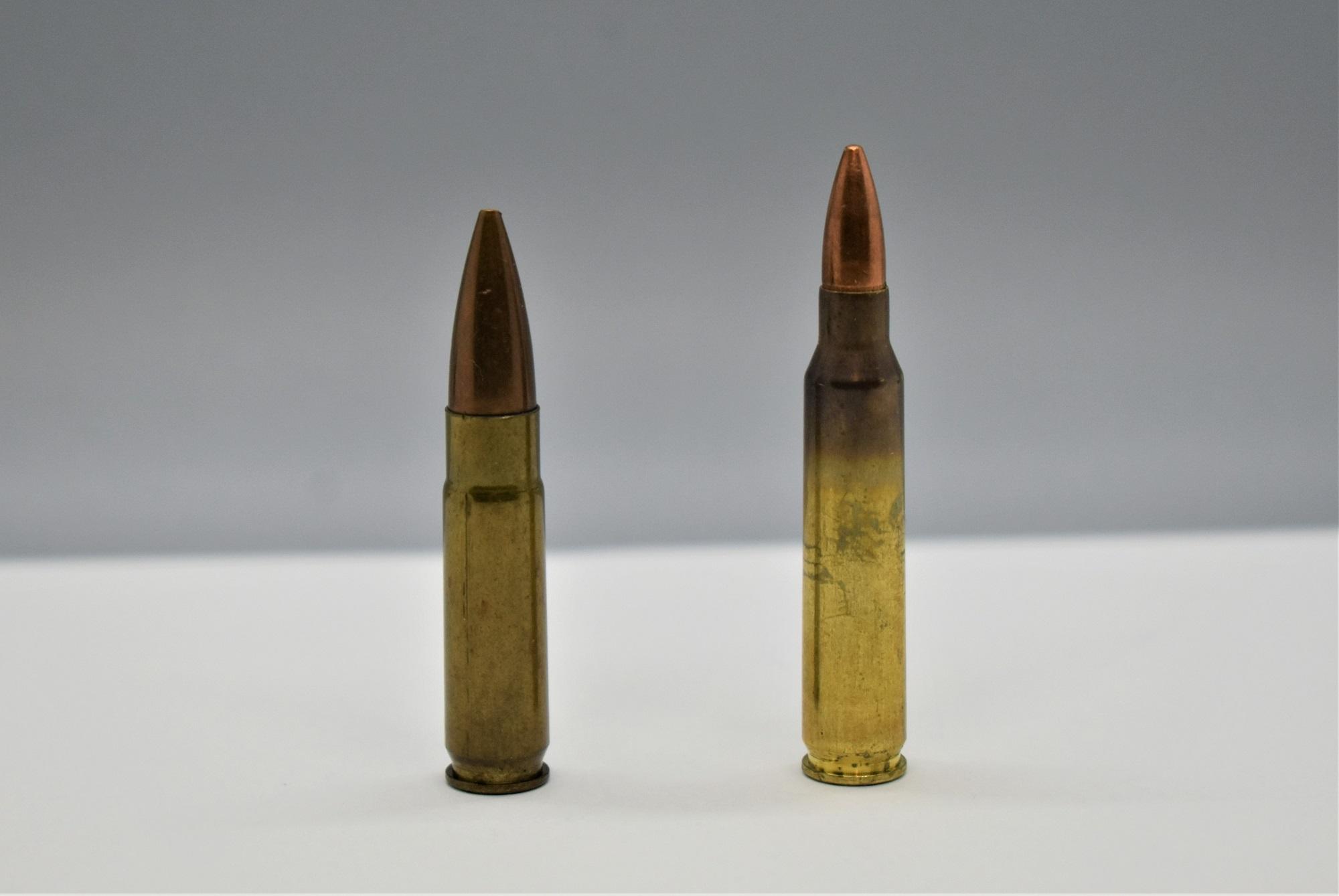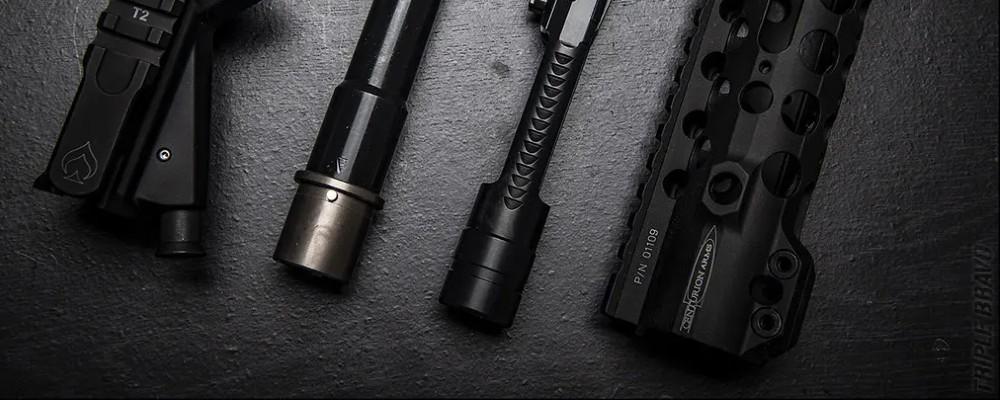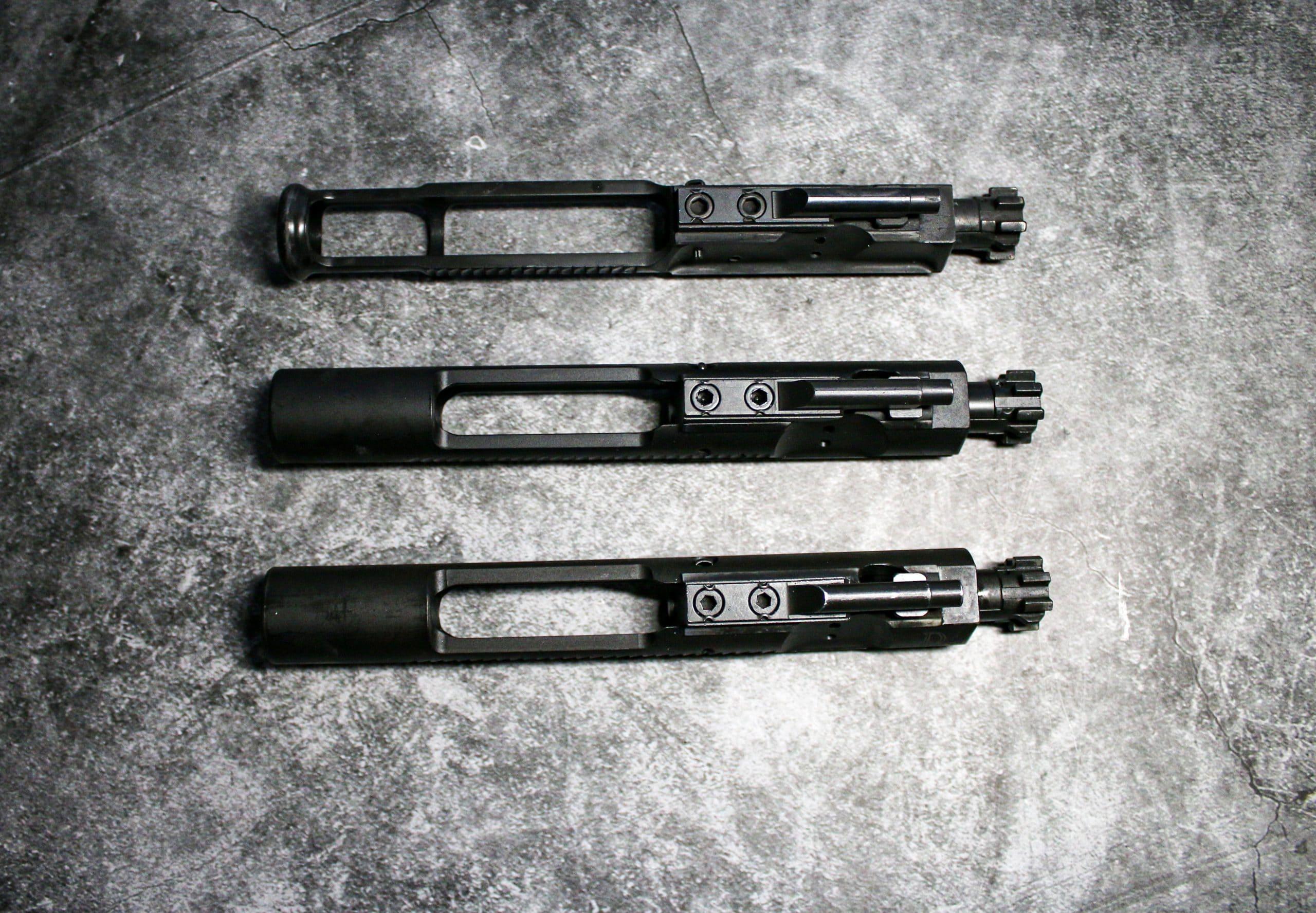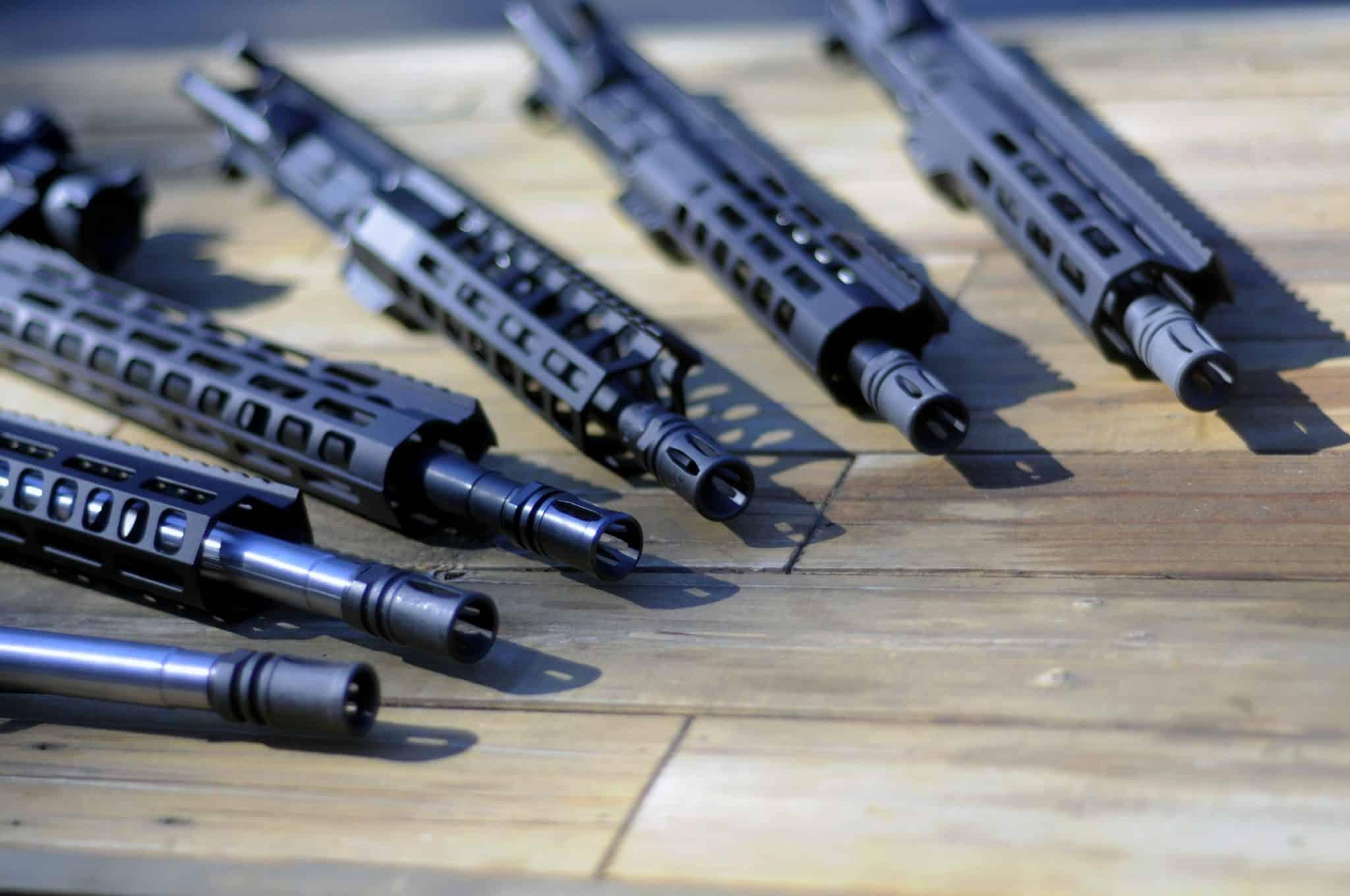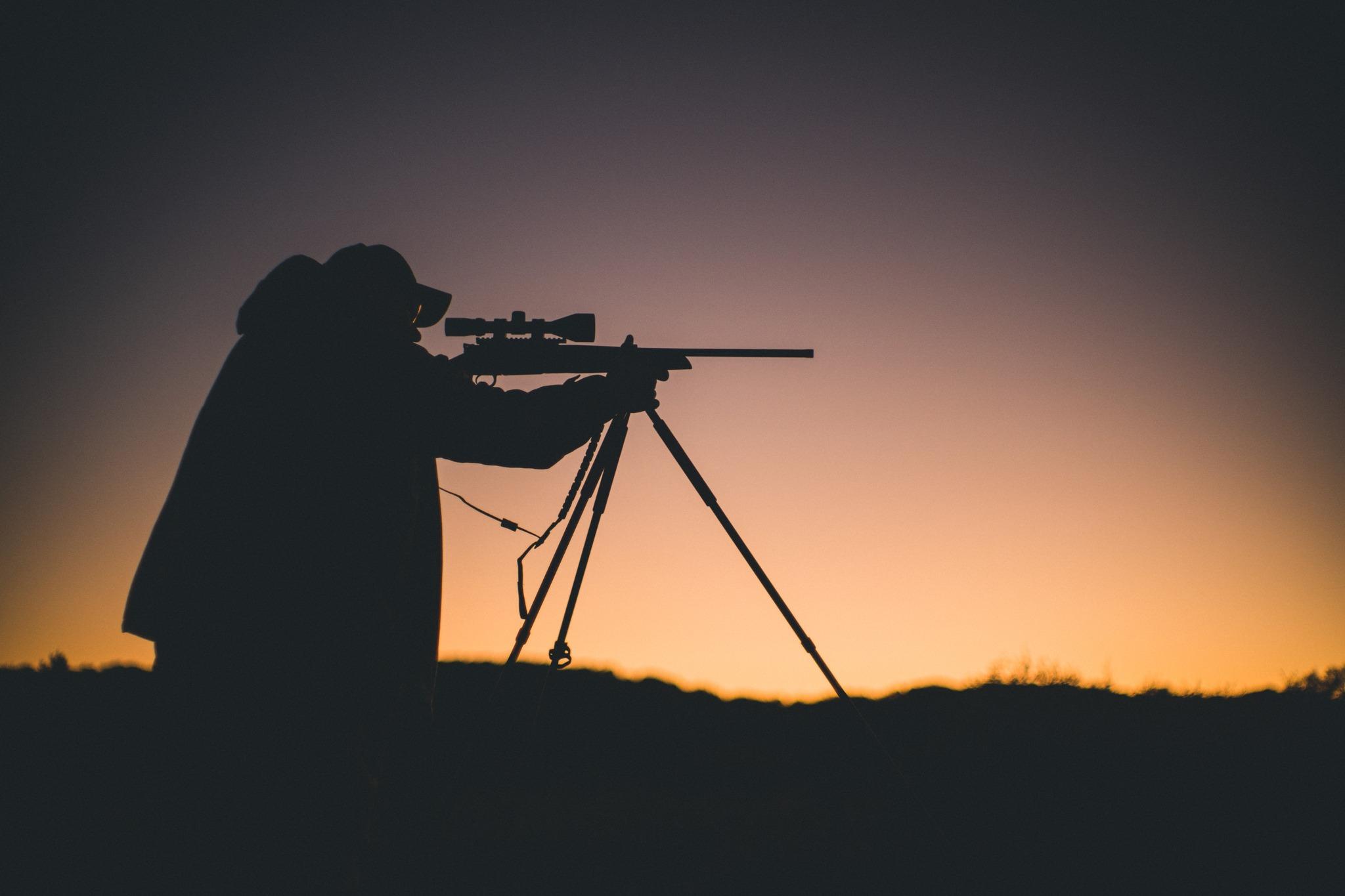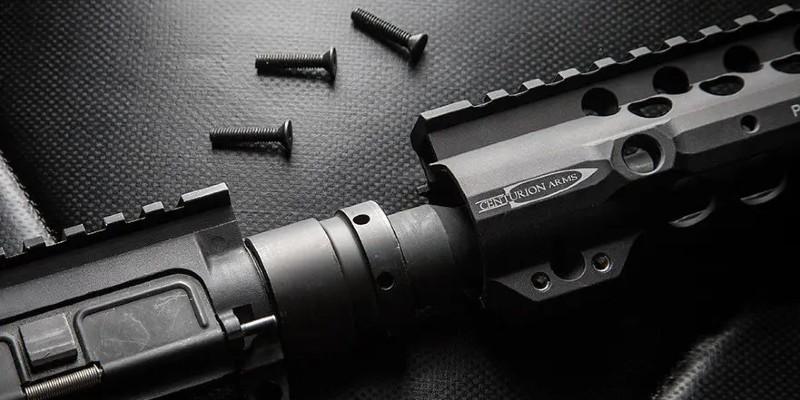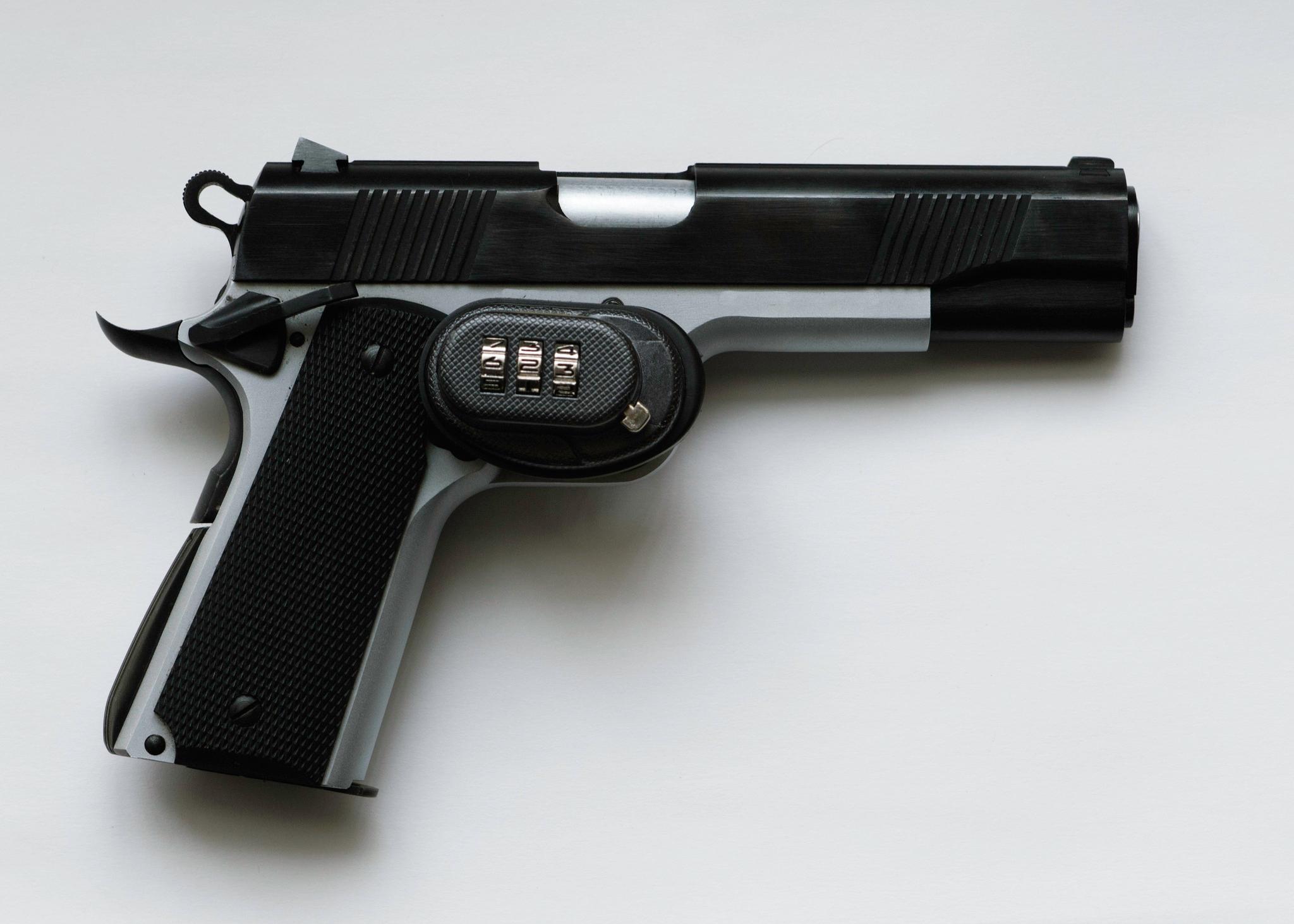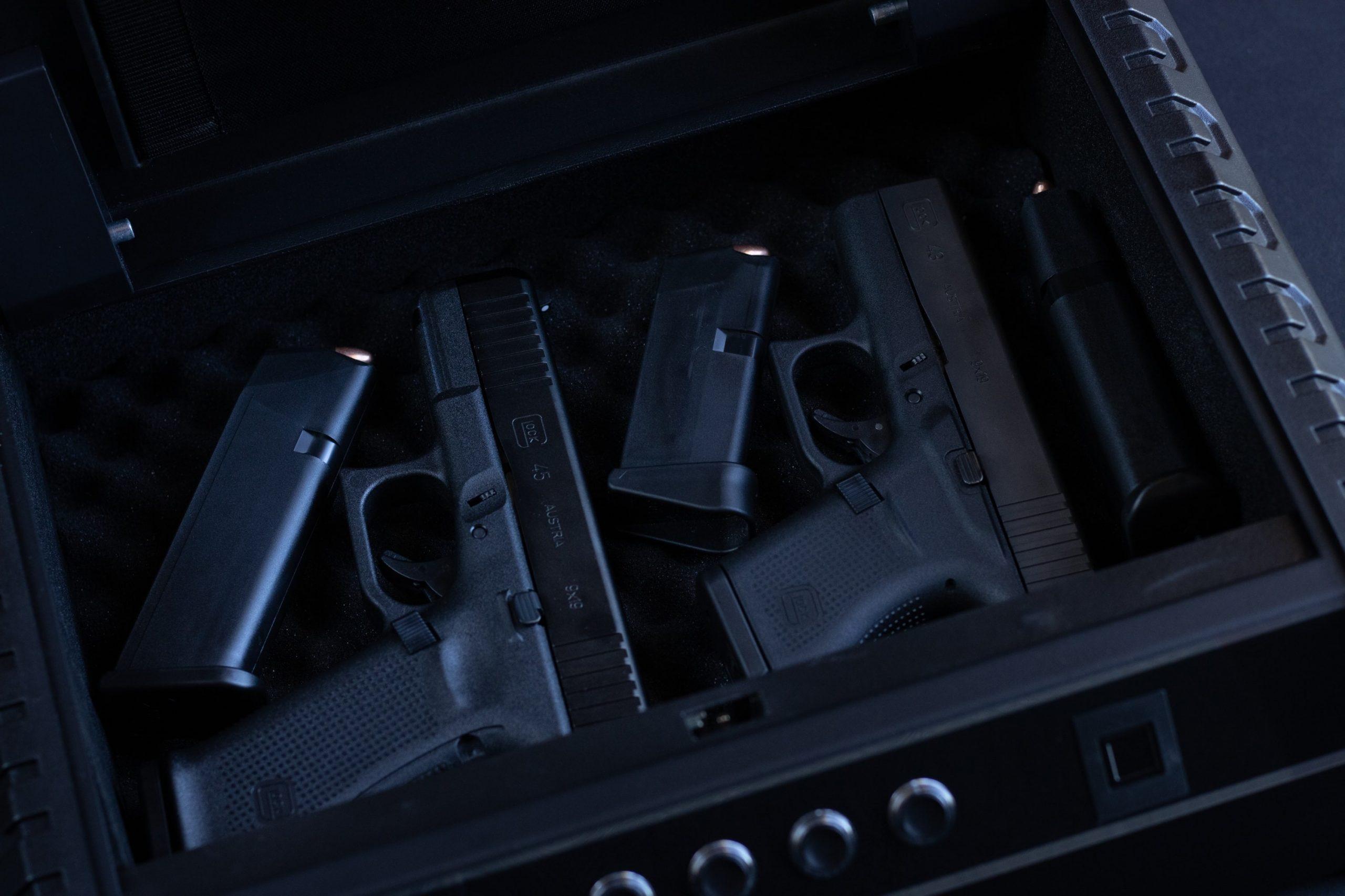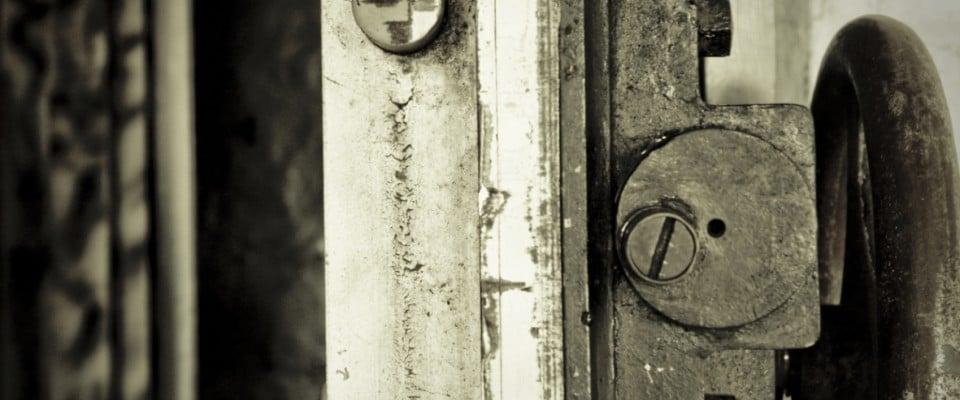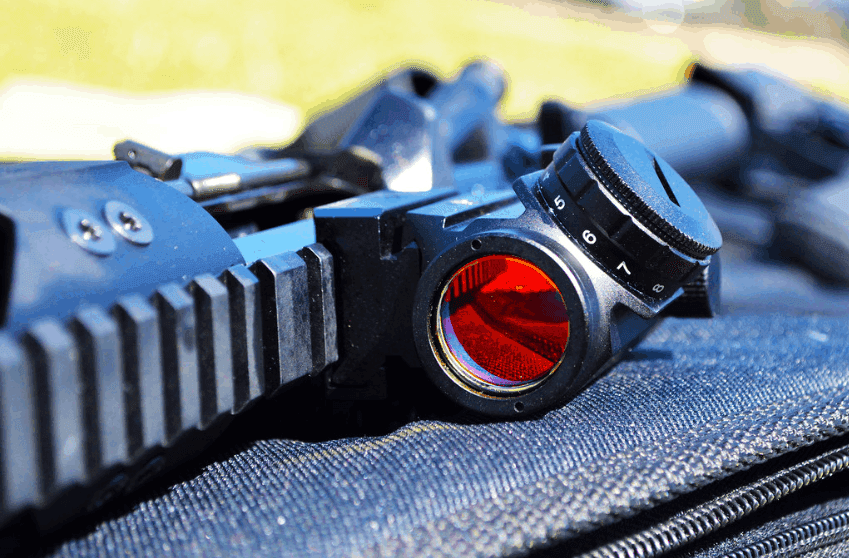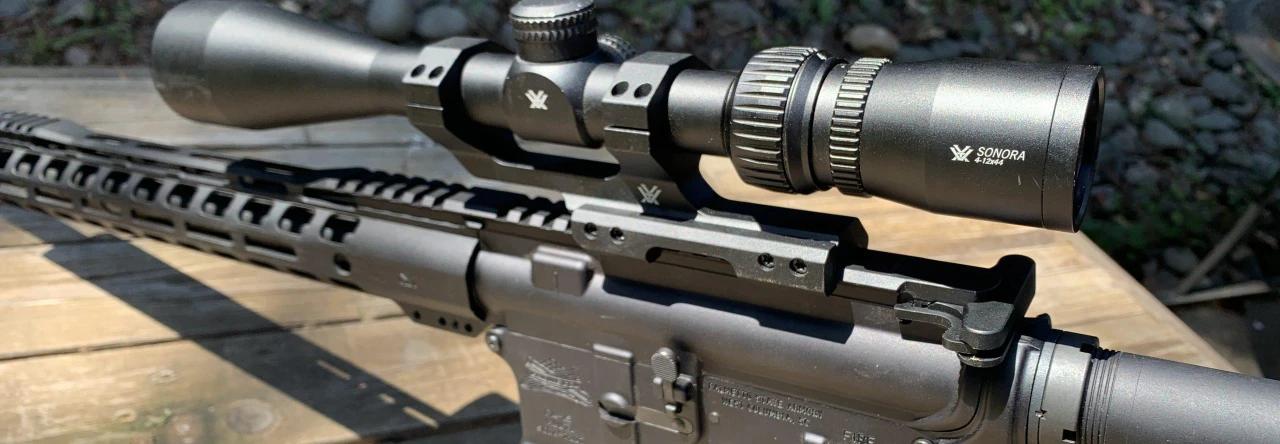Ultimate Guide to Smith & Wesson 9mm Pistols
Written By
Michael Crites
Licensed Concealed Carry Holder
Reviewed by
Editorial Team
Learn About The Editorial Team
Share:
Products are selected by our editors. We may earn a commission on purchases from a link. How we select gear.

Updated
Aug 2023
Smith & Wesson is a legend for a reason– they have a special place both in past firearms history and today’s gun industry. One of only two publicly-traded firearms companies, Smith is a giant in the field and has so many 9mm pistol variants that it can be a little daunting to try and figure out just what best suits your needs. That’s where we come in.
In This Article
Smith & Wesson 9mm Pistol Reviews
1. M&P Shield Plus
Smith & Wesson introduced the M&P Shield series in 2012 as an answer to Glock’s “Baby 9” i.e., the Glock 26. With a 3.1-inch barrel and a 7 or 8 shot mag, it was light and slim, ideal for deep carry.
In 2021, Smith redesigned the gun and knocked it out of the park with the new Shield Plus. Roughly the same size as the legacy Shield with a softer grip texture but the same thumb safety, the “Plus” comes from the fact it runs a 10 or 13-shot extended capacity with the same overall length, making it more akin to the new series of Micro-9s such as the Sig Sauer P365, and is optics ready.
For those looking for a super-compact 9 that you can still add an MRD to, the Shield Plus fits the bill.

2. CSX
In something different from a the Smith and Wesson 9mm pistols made in the past decade, in late 2021 the company introduced the CSX. Roughly the same size and capacity as the Shield Plus– 6.1 inches long, 1.1 inches wide, 4.6 inches high, and the ability to use 10 or 12-shot magazines– the question is what is the difference between the two?
Well, the CSX is more “old school,” using a single-action-only hammer-fired action with a manual frame-mounted safety, kind of like a mini-1911. This translates to a better trigger and appeals to fans of John Browning’s designs.
Also, it runs an aluminum alloy frame with interchangeable polymer backstraps, amazingly coming in just a hair heavier (19.5 ounces vs 19.3) than the polymer-framed Shield Plus.
You know what they say, everything old is new again.
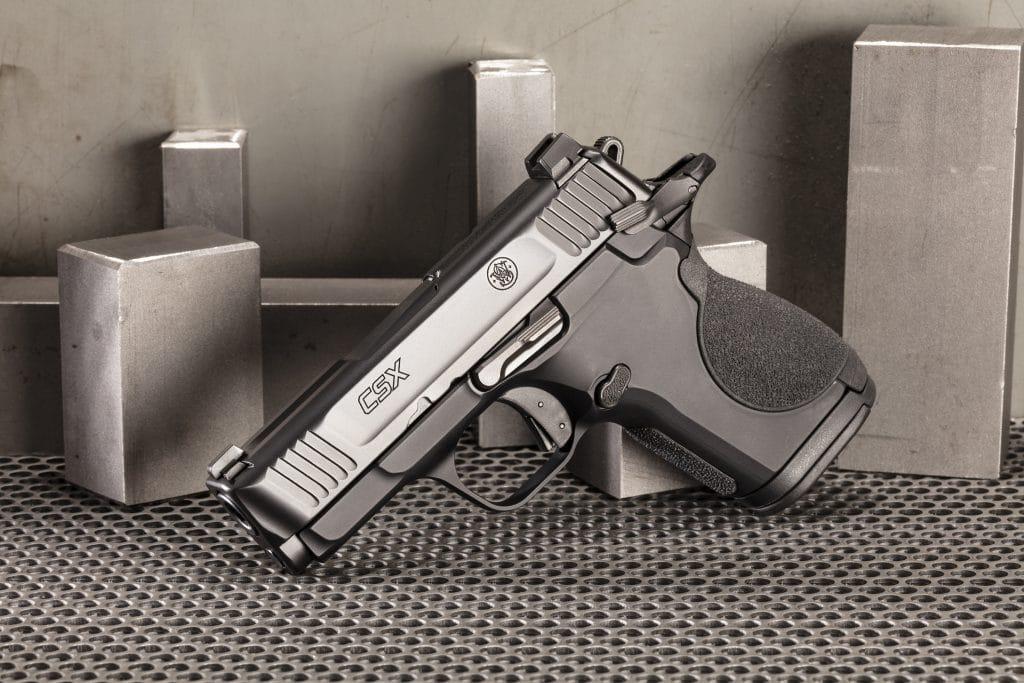
3. M&P9 Shield EZ
In 2019, S&W introduced what some derided as a “granny gun,” the M&P Shield EZ in .380ACP.
Designed for those with reduced hand strength– e.g., older folks, women, those with medical conditions, people with tiny hands– it blends the single-stack micro-compact frame of the standard Shield M2.0 models with a rear grip safety and a lightened slide with a reduced power recoil spring.
This makes the pistol softer shooting and easier to rack and use. In 2020, Smith doubled down on the design by offering it in an 8+1 capacity 9mm variant as well as a blinged-out Performance Center model complete with a flat-faced black, silver, or gold anodized aluminum trigger and grip safety along with HI-VIZ Litewave H3 Tritium/Litepipe sights.
4. M&P9 M2.0 Standard/Full Size
The standard M&P9 flagship model, the base M&P9 M2.0 has a 17+1 capacity and is akin to the Glock 17 Gen 5 in both size and capability, making it an ideal choice for a law enforcement duty gun, home protection, or practical competition.
When it comes to options, Smith offers the M&P9 M2.0 in more than 20 different variants including choice of the barrel (the 4.6-inch standard, a shorter 4.25-inch, and a longer 5-inch), sights (suppressor/optic height, steel white dots, night sights), in optics-ready formats (accepting seven different mounting plates for micro red dots via Smith’s CORE system) or traditional slides, color (black-on-black, FDE, two-tone stainless over black), and with and without a frame-mounted thumb safety.
One of the coolest super-optioned builds is the M&P9 M2.0 OR Spec series kit, which is a two-toned, FDE slide over a black frame, and includes a threaded extended barrel, suppressor height night sights, an optics-ready slide, and a Crimson Trace CTS-1500 red dot optic.
It also ships with goodies like an S&W branded boot knife and a challenge coin for an asking price under $1K.
Not to throw rocks, but you just don’t get that amount of variation in a Glock 17. Just saying.

5. M&P9 M2.0 Compact
Introduced in 2018 to compete with mid-sized polymer 9mm double-stacks like the venerable Glock 19 and CZ P-10C, the M&P9 M2.0 Compact earns its designation as it lives in the same specification range in terms of inches and ounces as those two guns.

Being a little shorter both in terms of length and height, the Compact runs a 15+1 round magazine capacity but can use the longer mags of the standard M&P9– it even ships with grip sleeves to take up the gap.
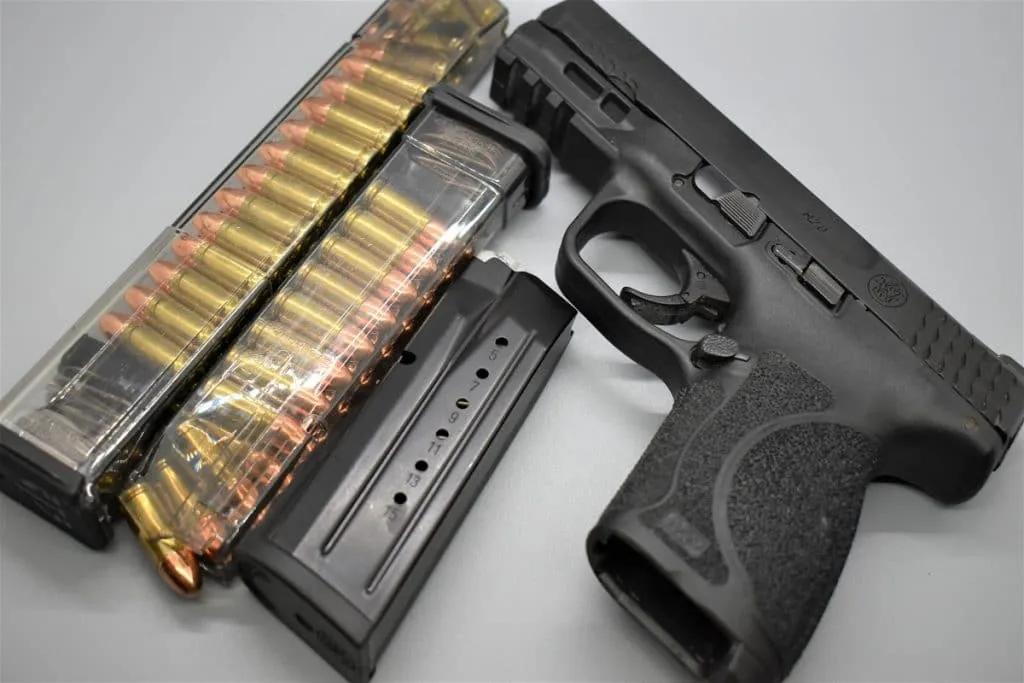
While the sweet spot on the Compact is a 4-inch barrel, it also can be had with an even shorter 3.6-inch barrel with a corresponding slide or a threaded barrel that runs 4.6 inches.
Like the standard M&P9 M2.0 models, Smith is offering these with a lot of options when it comes to finish, safeties, and sights. Check out our hands-on review of the Shield 2.0.
6. M&P9 M2.0 Sub-Compact
Following the same logic as the M&P9 M2.0 Compact, Smith’s Sub-Compact model trims a bit off the slide and takes a little off the grip, dropping both the length and height on this model to make it just a tad bit bigger than the Shield series while keeping a flush-fit 12+1 magazine capacity.
Offered with a 3.6-inch barrel only, you don’t get as many options with this particular M&P. However, it does have all the standard features including a low bore axis, 18-degree grip angle, and four interchangeable palmswell grip inserts to adjust hand fit and trigger reach.
7. SD9 Series
Introduced in 2010 as an improvement on the original Sigma (aka SWock) line of polymer-framed striker-fired pistols, the SW SD9 series is still trucking over a decade later.
No frills guns that make a stock M&P look like a Cadillac, the SD9 typically retails for less than $350 or so brand new, and Smith dealers will make you a deal on bulk buys, meaning they get purchased a lot for use by guard services. With a 4-inch barrel and a stainless steel slide, the standard model has a 16+1 capacity in 9mm and is offered in two-tone black and stainless, an FDE finish, and a gray finish, as well as with the option for factory-installed Hi-Viz sights.
A big bonus on these is that they are state compliant in a bunch of areas that don’t allow cooler guns. Of course, state compliance means 10-round magazines, so there’s that.
The bottom line on these is that you get a dependable if basic, 9mm polymer-framed pistol with a decent reputation that isn’t from Brazil or Turkey. In other words, Smith’s answer to Ruger.
What about Performance Center models?
In addition to the models listed here, S&W’s Performance Center can build a special order handgun based on customer specifications. Of course, this is typically for their SW1911 Pro Series guns when talking 9mm pistols, but they can both fine-tune the action and add factory engraving including scrollwork, full ornamentation, and inlays as well as polishing, plating, and special finishes.
Note that the SW1911 Pro Series 9mm variants are made in both a full-sized 5-inch Government profile with a 10+1 capacity and a subcompact 8+1 capacity model with a Scandium alloy frame and a very abbreviated 3-inch barrel profile. Be advised, that both are north of $1,400 when it comes to pricing.
Other more, vanilla, PC offerings include both standard model M&Ps and SW1911 Pros with ported barrels and slides, tuned actions and trigger stops.
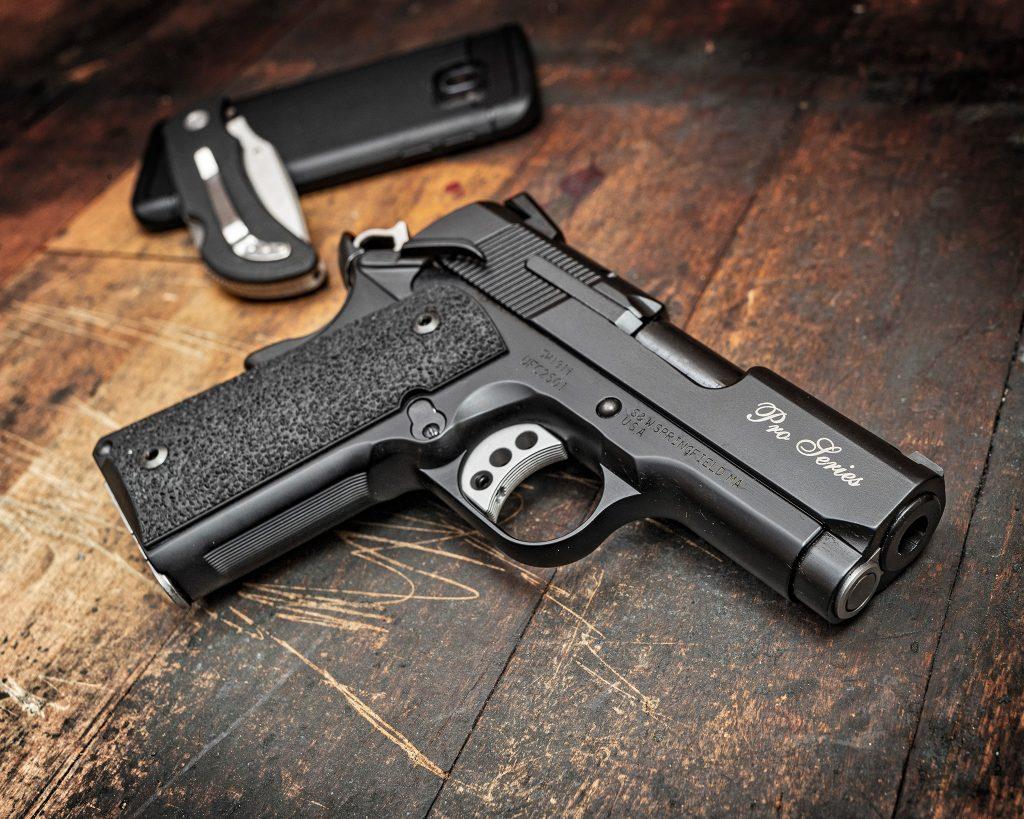
The first American 9mm maker
Founded in 1852, Smith & Wesson is one of the oldest American gunmakers, only narrowly bested by Remington who claims a circa 1816 origin.
While best known for their revolvers, Smith is also one of the oldest makers of semi-auto pistols in the world, having placed Belgian engineer Charles Philibert Clement’s interesting .35 S&W blowback autoloader into production in 1913. This later morphed into the Model 35, for obvious reasons.
After selling the U.S. and British military somewhere on the order of 900,000 “Victory Model”.45ACP pistols
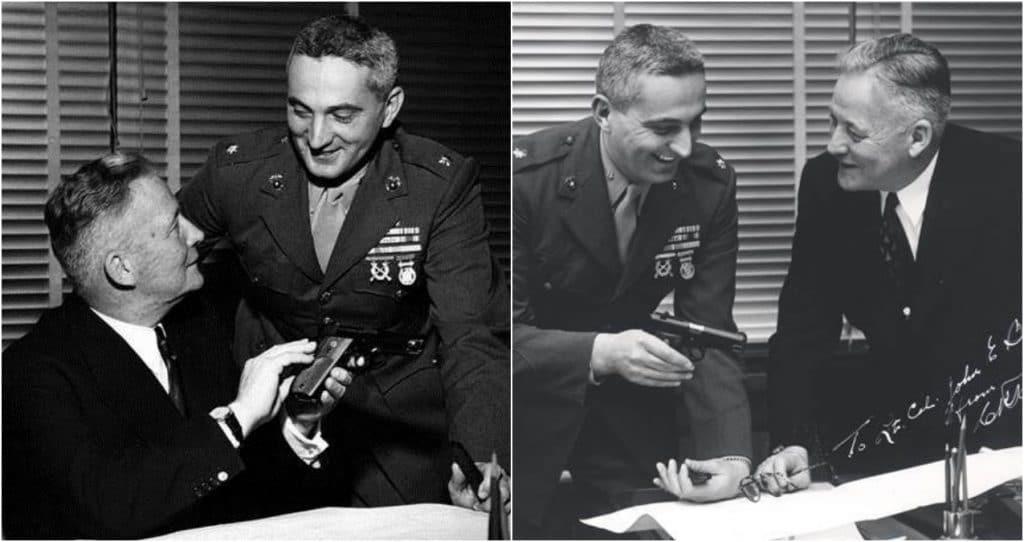
The resulting X100 program saw Smith & Wesson’s Chief Designer, Joe Norman, develop a 7+1 single-stack pistol using the 9mm Luger with a double-action trigger like the Walther P-38 and a Browning-style unlocking system.
It was lighter and more compact than the M1911, as well as being more modern by far.
In the end, the bean counters decided that the Army could make do with what they had rather than buy more handguns and stuck with the status quo until 1986.
However, not to let six years of R&D go to waste, Smith introduced the definitive version of the T4/X100 to the commercial market in 1955 as the Model 39, and it was the first American-made 9mm available.

In 1968, the Model 39 chalked up a big win after the Illinois State Police adopted the firearm, the first large American law enforcement agency to go 9mm semi-auto.
Proving popular even though the market was crowded with .45s and .380s while 9mm pistols were seen as the realm of European imports like the Browning Hi-Power and Walther P-38, the Model 39 remained in production until the early 1980s.
As anyone will tell you, a four-decade run is a good one for a new pistol design.
During that period, Smith doubled down– literally– on the Model 39 by adding a double-stack magazine design, dubbed the Model 59. Boasting a 14+1 capacity when introduced in 1971, the Model 59 hinted at things to come.
Then came the Second Generation

In 1979, Smith & Wesson began to introduce a better machined and more evolved series of improved 9mm pistols while putting the Models 39 and 59 out to pasture. This saw the carbon steel-framed Model 539 (single stack) and 559 (double stack), the alloy-framed Model 439 and 459, and the stainless steel Model 639 and 659 (see = Reservoir Dogs) arrive on the scene.
Notably, the 459 competed against the Beretta 92 in the Army’s 1980s pistol trials, in sort of a repeat of the old X100 program, although it worked out better for Beretta than Smith.
The Wondernine Years: S&W's Third Series 9mms

As S&W’s 2nd Gen 9mm pistols became an all-out hit with police forces across the country, Smith further refined their semi-auto pistols and expanded the number of configurations available when they introduced their 3rd Generation line in the late 1980s.
In 9mm format, this included the 12 pistols in the compact Model 3900 series, another 21 pistols in the full-sized Model 5900 series, and 9 pistols in the Model 6900 series. Obviously, with some 40 different 9mm semi-autos in their catalog offering a variety of finishes, barrel lengths, magazine capacity, sights, and actions, Smith had a “Wondernine” for every occasion and customer.
Then came plastic.
"The SWock"
While HK introduced the world’s first polymer-framed striker-fired pistol– the VP70– while Nixon was in the White House, Gaston Glock would make the concept acceptable with his innovative 17-shot 9mm in the mid-1980s.
After the initial misgivings fell away about the “plastic fantastic” a few years later, it became popular with both consumers and law enforcement. Over at S&W, as the company started losing large police contracts to the budget-friendly Austrian polymer pistol and Smith reps visiting gun stores on their route saw fewer and fewer of their Wondernines on dealers’ shelves, a change was in the air.
This led to the S&W Sigma series in 1994. A polymer-framed striker-fired pistol, the company’s first, the public saw it as being so close to the Glock as to refer to the gun almost instantly as the “SWock,” for better or worse.
Suffering from a lackluster reputation, especially in terms of quality and trigger pull, Smith would make at least 15 different Sigma models and the lineage of these mid-90s guns can be seen in today’s “value-priced” SD series, which debuted in 2012 and remains in production.

Enter the M&P series
After a decade of feedback with the Sigma line, and feeling the time was right to go ahead and bring the curtain down on the old all-metal Wondernines, Smith & Wesson debuted a new family of polymer-framed pistols in 2006.
Dubbed the “Military and Police,” a designation that was carried by Smith’s previously well-liked Model 10 6-shot .38-caliber revolvers– guns that were made in the millions across most of the 20th Century– the new guns were semi-automatic and offered in four primary calibers, with 9mm in the lead.
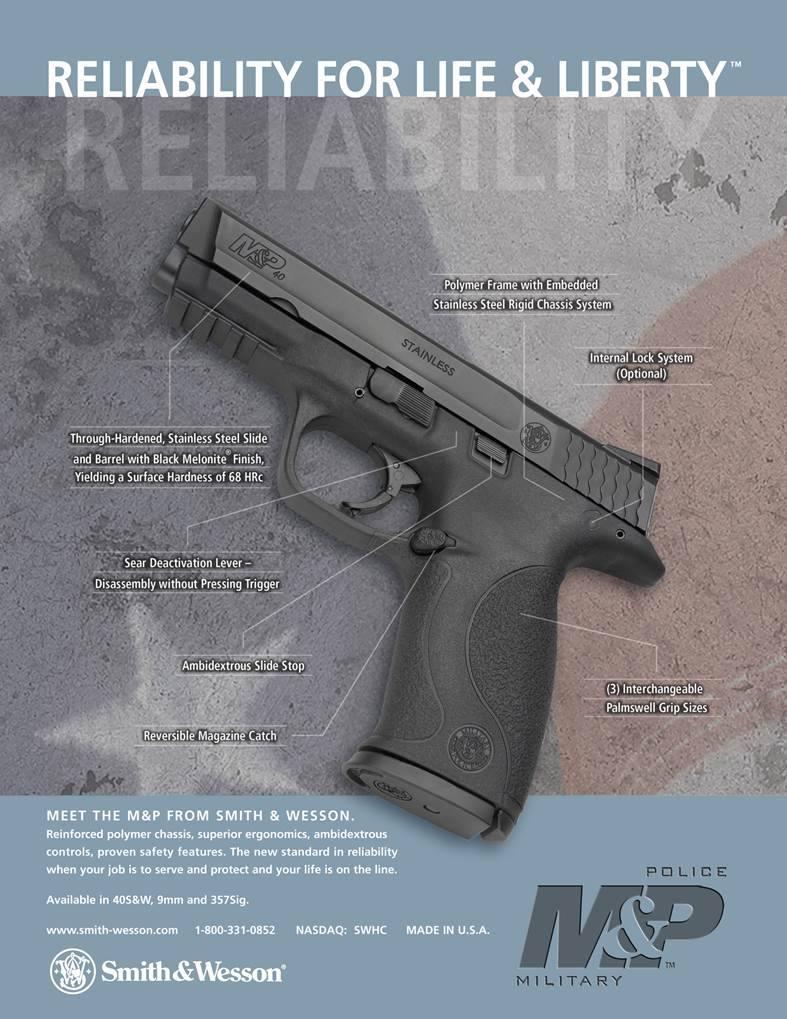
Using a Melonite-finished stainless steel barrel and a slide with distinctive twin scalloped “fish scale” serrations, the M&Ps all used the same style Zytel polymer frame reinforced with an internal stainless steel chassis.
They were fitted with Novak Lo-Mount Carry rear sights– a vast improvement on Glock’s dinky fixed sights– as well as offered with options for an ambidextrous manual safety.
In another change from the Glock’s more slanted 22-degree grip angle, the M&Ps used an 18-degree grip angle, borrowed from guns like the classic M1911, a feature which many felt was more comfortable and natural to shoot.
Further, while Glocks at the time had no options for changing the grip that didn’t involve a file and skateboard tape, Smith’s new polymer pistols came with three interchangeable palmswell panels so that the user could swap them out for the best fit– a feature Glock didn’t come out with until 2010 with their Gen4 models.
As another bonus, the M&P was introduced with a hinged 6.5-pound trigger with a more traditional round bow, which to many felt better than the Glock’s flatter 5.39-pound safety trigger.
Which brings us to the M2.0 M&P
Smith & Wesson is good about listing to user feedback and in 2017, after getting 10 full years of it on the original M&P series pistols, introduced the M&P M2.0 which upgraded nearly every aspect of polymer pistol.
This included an extended stainless-steel chassis, a higher grip-to-barrel bore axis ratio which is designed to help reduce muzzle rise and get back on target faster, and a better M&P M2.0 trigger.
With lots of folks frowning at the slippery grip of the original M&Ps, the M2.0s included a more aggressively textured grip and added a fourth interchangeable palm swell insert, up from the previous three.
Today, technically Smith’s 6th generation (or 7th if you count the early Clement guns) of semi-auto pistols in over 109 years, the M2.0 M&Ps are at the top of the company’s food chain when it comes to fully evolved handgun designs.
Sure, Smith still makes the SD/SVE series (they are popular with security guard and armored car services), and some new-in-box Gen 1 M&Ps are floating around, especially in California, but the M2.0s are the great white shark of S&W’s 9mm pistols.
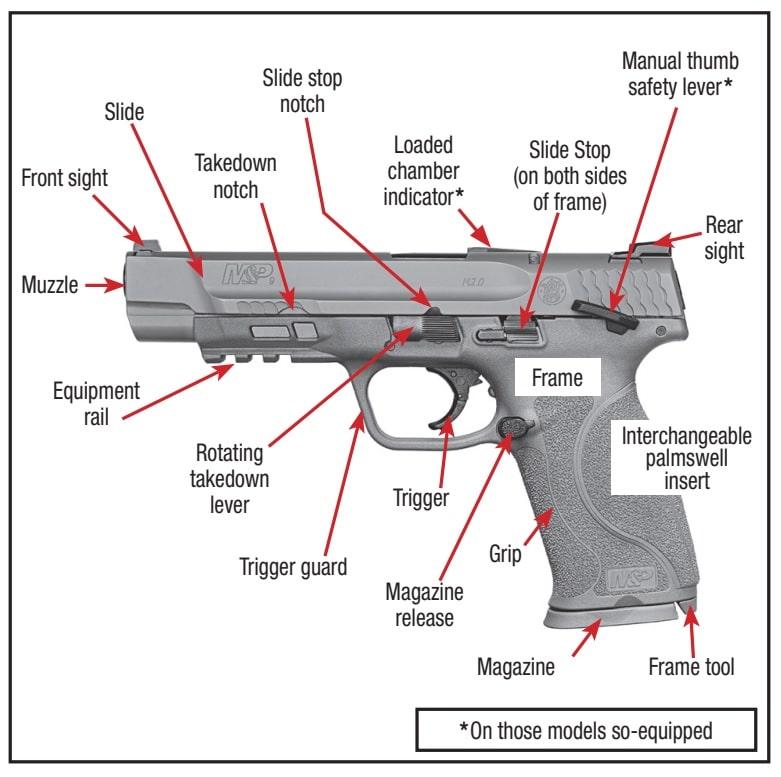
Aftermarket support
When it comes to keeping your S&W 9mm going, the company currently has both a limited lifetime warranty and a lifetime service policy if you come across an issue that’s bigger than normal user-level maintenance.
The current 9mm models in production are rated for use with both factory standard and +P ammunition loads. While magazines are not as cheap and plentiful as say those for a Glock, they are available from both Smith as OE mags and from budget makers like ProMag that are a little less spendy.
Parts makers such as ISMI and Wolff make a variety of springs in assorted forces for the M&P line. Hi-Viz, Meprolight, and TruGlo make aftermarket day and night sights in assorted varieties. Should you want to upgrade a trigger, Agency Arms and Apex have pages of drop-in trigger kits that fit the M&P.
Last time we checked, a half-dozen companies and shops made drop-in replacement barrels. Finally, holster makers ranging from small bespoke leathercrafters to large outfits like DeSantis and Galco have holsters on hand in both hide and Kydex.
So, are Smith & Wesson pistols any good?
Smith has been in the handgun business since the beginning of the company in 1852, only more recently getting into rifles and the occasional shotgun.
That sort of longevity and name recognition, earned from delivering high-quality firearms year after year, is worth something. Now on their 6th generation of 9mm pistols since the 1940s, they have more experience with the caliber than any other maker in the world except possibly FN, a company that only has about a decade more in the game.
That sort of ongoing cycle of research and development, each one learning from the lessons and feedback garnered from the field experience of tens of thousands of users, is priceless, and Smith has made it a habit of listening to that input to make better guns — be it CA compliant needs like a loaded chamber indicator and magazine safety or micro-compact carry options.
So yeah, Smiths are pretty good, especially for the price.
They call it the M&P for a reason
While the “Military and Police” moniker on the current M&P series pistols was borrowed from the old Model 10 .38-caliber revolvers and the WWII-era Victory series that preceded it, do not think that Smith hasn’t had success on the law enforcement market with its newer 9mm pistols.
In 2011, the Belgian Federal Police– keep in mind FN is based in Belgium– signed a contract for 20,000 MP&9s to be delivered over a ten-year period. In that case, the Smith performed better than Glocks and other pistols in trials and evaluations. The Belgians weren’t alone, as the M&P9 is used by internal security forces in at least 16 countries including Colombia, France, India, Italy, South Korea, and Spain.
And we aren’t even talking about the more than 80,000 S&W 9mm pistols sent to the U.S.-supported Iraqi and Afghan military, border guards, and police between 2006 and 2010.
On this side of the pond, Smith said the M&P has been adopted or approved by no less than 430 agencies in the U.S., ranging from the state police in Colorado, Iowa, New Hampshire, and New Mexico, to large metropolitan police departments in Atlanta, Charlotte, and Colorado Springs. The largest sheriff’s office in the country, the LA County Sheriff’s Department (LASD) swapped out their famed Beretta 92s for the Smith & Wesson M&P9 in 2014 and recently started a program to move to the M2.0 variant.
It is an authorized pistol for the DEA and other federal agencies.
In 2016, it was only narrowly cut from the U.S. Army’s Modular Handgun System competition– along with the Beretta APX, FN’s 509, and Glock’s 19X– beat out in the end by Sig Sauer’s P320-based submission to become the M17/M18 series of pistols.
Closing thoughts
If you ask someone on the street to name a handgun company, it’s an even-money bet your answer will be either Glock or S&W.
However, Glock is a veritable new kid on the block when stacked against Smith’s 9mm history.
Further, with a catalog that includes everything from full-sized 17+1 pistols with 5-inch barrels, compacts, sub-compacts, micro-compacts, polymer-frames, alloy frames (who else sells Scandium guns?), and a blizzard of other options, it is hard to believe you can’t find a Smith 9mm to fill your exact needs and wants.
Sign up for our newsletter
Get discounts from top brands and our latest reviews!

